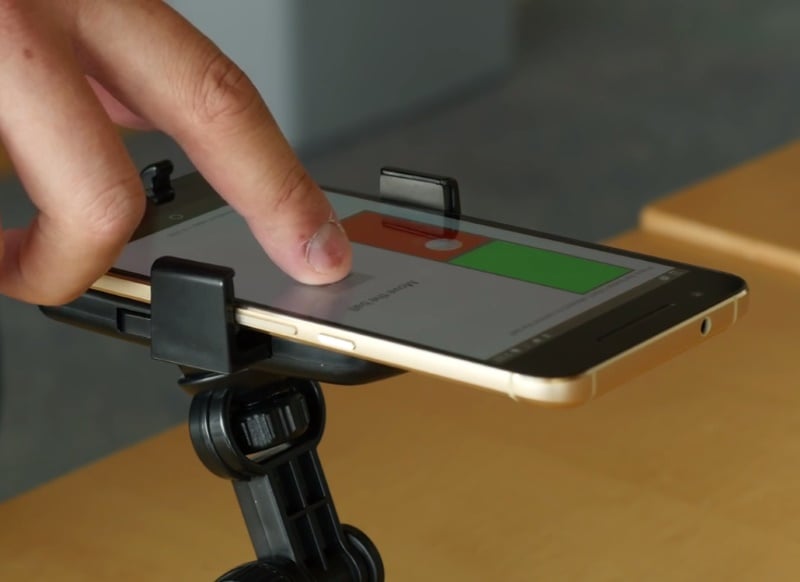A new software enables the body of any smartphone to sense force that would allow you to issue commands through your phone simply by squeezing it. For example, you could dial 911 by squeezing your smartphone in a certain pattern in your palm. Or, using a different pattern, turn the music on or flip a page on the screen.
The software, called ForcePhone and
developed by engineering researchers at the University of Michigan, could also enable users to push a bit harder on a screen button to unlock a menu of additional options, similar to right-clicking with a mouse. The developers envision these and many other uses for their technology, which could offer the masses a coveted feature of the latest generation of smartphones.
The iPhone 6s has a force-sensing screen but the less expensive iPhone SE doesn’t. There are no commercially available devices that feature a pressure-sensitive body.
"You don't need a special screen or built-in sensors to do this. Now this functionality can be realized on any phone,"
says Kang Shin, a professor of computer science at the University of Michigan. "We've augmented the user interface without requiring any special built-in sensors. ForcePhone increases the vocabulary between the phone and the user."
Shin created the system with Yu-Chih Tung, a doctoral student in the same department. "I think we're offering a natural interface, like how you turn a knob," Tung adds. "It's the next step forward from a basic touch interface and it can complement other gestured communication channels and voice."
WHAT IS ULTRASONIC TECHNOLOGY?
The word “ultrasonic” combines the Latin roots ultra, meaning “beyond,” and sonic, meaning “sound,”
says Srinivasa Rajaram, a BCC Research analyst. The field of ultrasonics involves the study and application of the energy of sound waves vibrating at frequencies greater than 20,000 cycles per second, beyond the range of human hearing.
The application of sound energy in the audible range is limited almost entirely to communications because increasing the pressure, or intensity, of sound waves increases loudness and therefore causes discomfort to human beings, Rajaram explains. Ultrasonic waves, however, being inaudible, have little or no effect on the ear, even at high intensities.
They are commonly produced by a transducer containing a piezoelectric substance (e.g., a quartz-crystal oscillator that converts high-frequency electric currents into vibrating ultrasonic waves). Rajaram notes that the field of ultrasound has various applications for imaging, detection and navigation—from helping prospective parents get a glimpse of their unborn child to guiding submarines through the oceans.
NEW SOFTWARE TRANSLATES TONE CHANGES INTO COMMANDS
ForcePhone works by borrowing two of a phone's fundamental attributes—its microphone and speaker. The software sets the speaker to emit an inaudible tone at a frequency higher than 18 kHz, which is outside the range of human hearing. But the phone's mic can still pick up the vibration caused by the sound.
When a user presses on the screen or squeezes the phone's body, that force changes the tone. The phone's mic can detect that, and the software translates any tone tweaks into commands.
"Having expensive and bulky sensors installed into smartphones can solve every problem we have solved, but the added cost and laborious installation prevent phone manufacturers from doing it," Tung
notes. "Our sound-based solution can fill this gap, providing the functionality without making any hardware modification. Everything is just software."
Tung picked up the idea of harnessing the phone's microphone and speaker for other purposes from the Batman movie, "The Dark Knight." In the film, Batman turns all the smartphones in Gotham City into a sonar system as high-frequency audio signals bounce off the city's infrastructure. He uses them to track the Joker, inspiring Tung to imagine turning smartphones into a sonar-based system.
ULTRASONIC INDUSTRY MARKET FORECAST
The global market for ultrasonic equipment totaled $28.3 billion last year,
according to Rajaram. He anticipates the market to reach $31.6 billion this year and more than $54.5 billion in 2021, with a five-year compound annual growth rate (CAGR) of 11.5%.




